The Cradle
Levesville-la-Chenard
Fr. Louis Chauvet
Founder, Sisters of St. Paul of Chartres
MISSIONARY PASTOR IN LEVESVILLE-LA-CHENARD
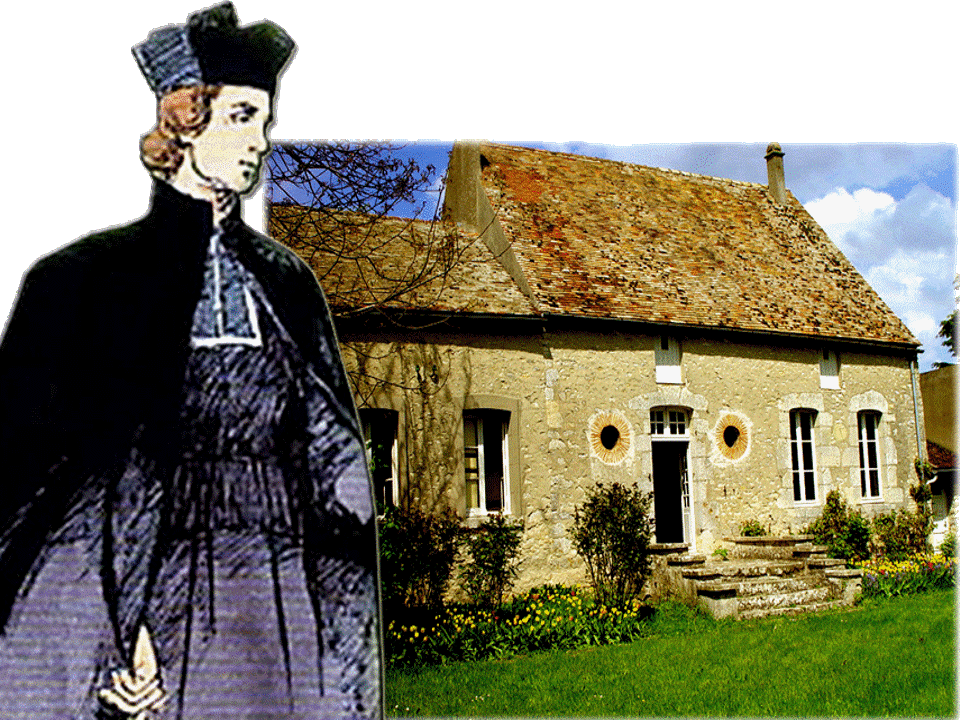
Sometime in June of 1694, Father Louis Chauvet arrived in Levesville-la-Chenard, having been appointed as the new parish priest. Levesville is a tiny village about 38 kilometers from the city of Chartres. As Levesville’s parish priest, he became pastor as well to the neighboring hamlets of Abonville and Ensonville. For the next 16 years, Father Louis Chauvet dedicated himself to improve the human and spiritual conditions of his parishioners. He was a spiritual Father to everyone – the poor, the rich, the widow, the children, the peasants, the artisans, the local nobility. He welcomed them in his rectory, instructed many, administered the sacraments, visited them when they were sick, rejoiced with them at weddings and baptisms and accompanied them in their last hour.
Thus the drab and ordinary took on a touch of newness with fine quality…given the fresh perspective of the 30 year old priest from Provence.
One thing that was true in the late 17th century is still true today that when one gradually discovers the many, previously unnoticed aspects of the person of Father Chauvet, one sees how the light of his attachment to beauty shines through. It is revealed in the transformations that he brought about in Levesville.
"ULTIMA LATET"
Father Louis Chauvet had that distinctive gift of bringing forth transformation. It was not simply in the purely structural aspect of the rectory which to this day boasts of a sundial with the inscription “Ultima latet” (the final hour is unknown). His presence and his ministry also brought changes to the life of the parish as a community. His dedication and zeal in his ministry worked in the manner of the proverbial leaven that transformed the ordinary dough.
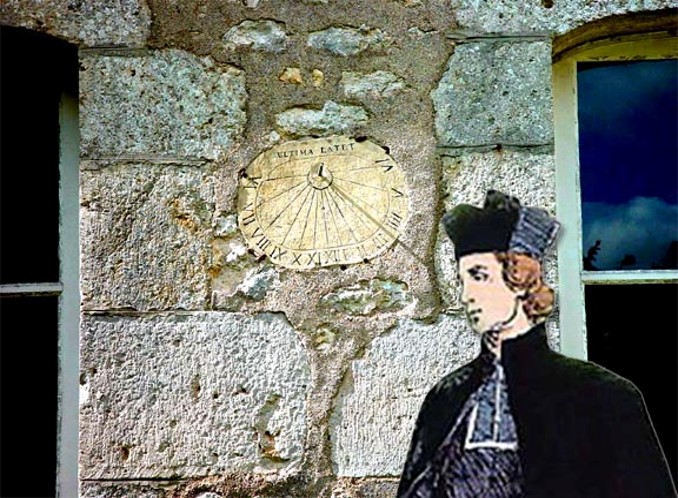
Much of that transformation was due to the project that he quietly cherished deep in his heart when he begun to identify what was at the root of the sufferings of the poor in the Region of Beauce. Besides the fact that rural areas were generally neglected by government services, they were likewise often the last in getting the care and attention of the Religious Congregations who were mostly established in the cities.
The Founder's Charism
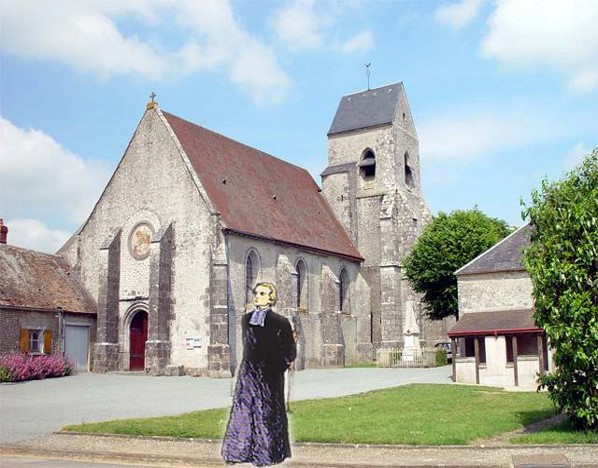
When Father Chauvet arrived in Beauce, no organized help was there for victims of plagues and epidemics, nor for the widows and the elderly who were abandoned. The ignorance of God, the absence of opportunity for education among the underprivileged resulted in an oppressive situation that was appalling.
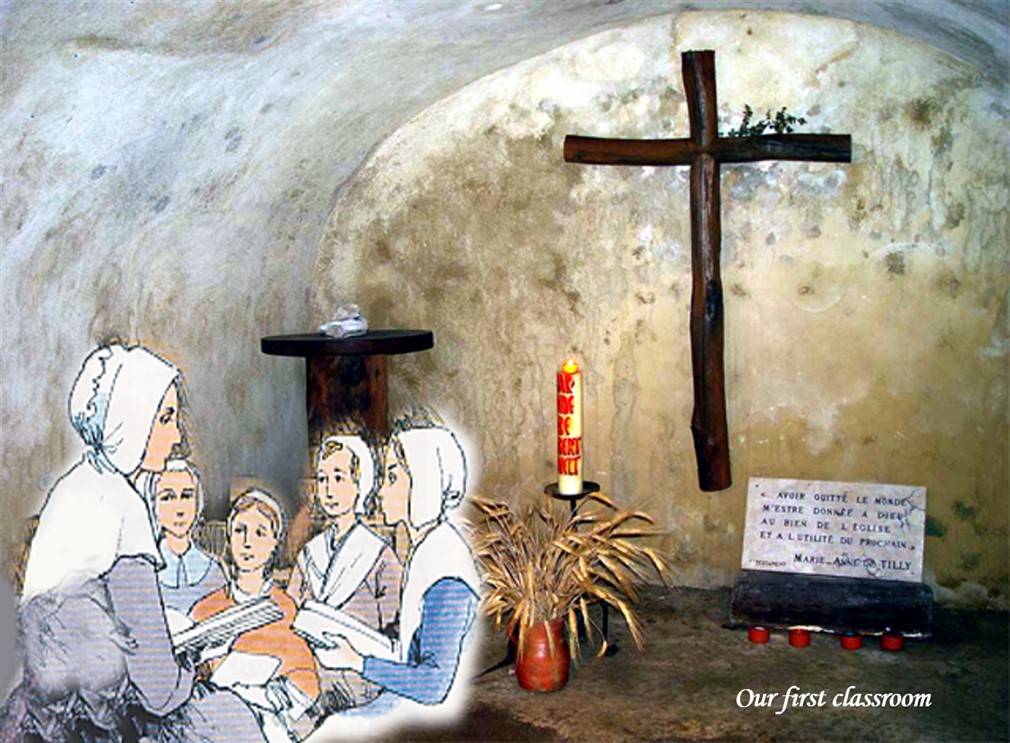
The seed of a Religious project took root in his heart and mind. Although he has never spoken publicly about opening a school in Levesville, a specific recorded official act points out the exact date when Fr. Louis Chauvet made a move towards the realization of this project “on April 28, 1695, the parish priest of Levesville rented out land for the support of a schoolmistress.“
Henceforth, the foundation of a Teaching Religious community had ceased to be simply a dream. Soon, under the skeptical view of some opposing souls, the young pastor of Levesville-la-Chenard found means and help to bring about the transformation of an obscure farming village into a basic gospel community.
A man with a heart
on fire
The formation and transformation of Marie-Anne de Tilly, Marie Micheau and Barbe Foucault – the First Daughters of the School came from a deep faith strengthened by trials and patience in suffering – the paschal way. They were formed in the spirituality of Fr. Louis Chauvet making them into Christ’s disciples led to the Foundation of the Congregation of the Sisters of St Paul in 1696 and the opening of the First School in 1700 in Levesville and from there, to the world.
These were the tiny grains of wheat that fell into the ground and died in order to yield a rich harvest. They died young but ripe for eternity: 1702: Mother Marie Micheau, 19; 1703: Mother Marie-Anne de Tilly, 38; 1726: Mother Barbe Foucault, 45.
Father Louis Chauvet, Founder of the Sisters of St Paul of Chartres died on June 21, 1710.
He was buried in the Church of Levesville on June 22, 1710. In 1843, when Mother Maria Rouyrre was the Superior General, the remains of Fr Chauvet were transferred to the chapel of the Mother House in Chartres.
How did he help in the transformation of a Marie-Anne de Tilly from being the dutiful, silently suffering elder daughter of a landed, penniless country nobility to become the teacher formator of his first recruits?
To Levesville from Pertuis,
A man was sent one day,
Priest of God, with heart on fire,
Father Louis Chauvet.
By Christ’s love you were spurred on
Like the apostle Paul of old,
To the Church’s needs responding
To the signs of the times you were keen.
To your call young ladies were drawn,
Filled with fervor for your mission,
To make known the love of Christ,
To the suffering, the poor, the child.
You led them in simplicity and poverty,
In prayer and self-sacrifice.
Kindled in their souls by charity,
The gift they gave was their whole life.
Dear Father Louis Chauvet,
Your life was marked with the paschal mystery,
Forgetting self that Christ may increase,
Dying like the grain to give life and newness.
O man whose heart was afire with love,
You welcomed the gift of God.
May Christ, through you, set us ablaze
That his love we may spread along life’s ways
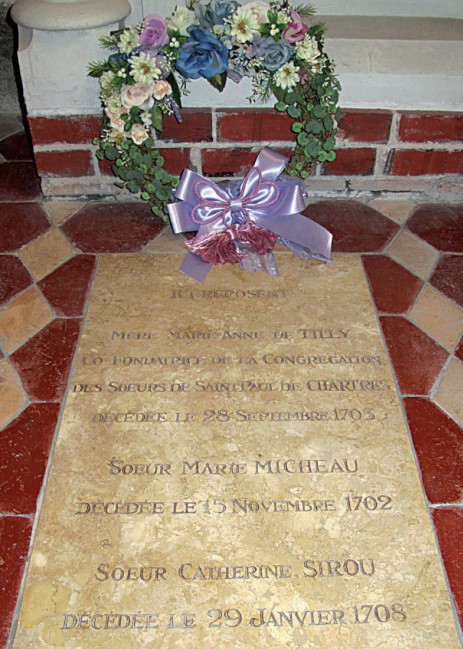
And later on, how did he guide the same fearful, and loving daughter who would brave the threats of her stepmother to live in community with peasant girls and become the second Superior?
Where did he get the daring and the certainty that the young Marie Micheau – who has never known the existence of a school in all her 17 years – would be transformed into a good learner and be the first School Mistress and Superior of the Daughters of the School in 1700?
And who would think that the shy and silent Barbe Foucault, formerly a domestic employee in a rich Farmhouse, would transform her shyness into a tranquil daring to become successively a hospital nurse, a Superior and in 1717, as the First elected Superior General of the Congregation?
His Last Days...
It was the month of June when the days are a bit longer, the season when ears of grain are ripening under the sun. The harvest looked very promising. A little longer and the granaries would again hold the golden grain that will restore dignity to so many families overwhelmed by famine. In Levesville, the inhabitants were preparing for happier days, the widows and widowers were thinking of getting married again. The young people have begun to enjoy life again, with the summer sun high in the sky. New babies would be born and would have more chances to survive.
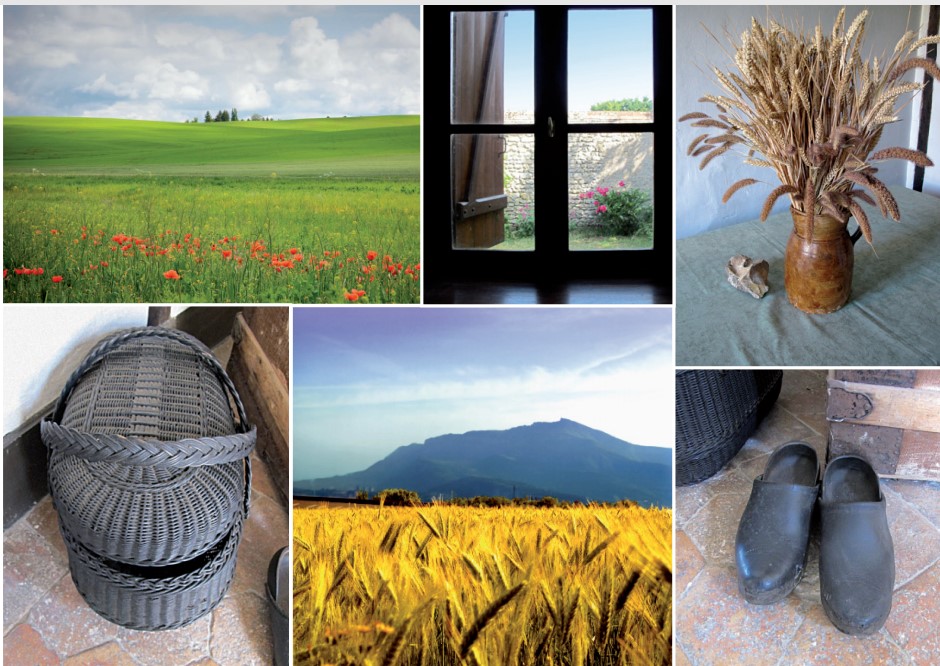
At the rectory Genevieve Chauvet, the younger sister of Fr. Chauvet, kept herself busy in dedicated service. There was also the 17 year old nephew, Louis, who just arrived from Pertuis. He has learned to appreciate his aunt and especially his uncle who was helping him to prepare for the priesthood. On that day, the sun shone brightly but the circumstances gave it a paschal glow. Father Chauvet felt that his time had come, that his days were numbered.
On June 13, the funeral service of a little baby of one month, took place at the church. This funeral marked the end of all parish activities for Father Chauvet because he no longer had the strength to do it. So the act of burial was signed by someone who left no identification except for a note: “The priest could not sign because he himself is nearing death.”
On June 15, 1710 even though he was sick in bed, Father Chauvet, in his own handwriting, and in perfect clarity, made some corrections to the will that he wrote on November 7, 1706. Four years have passed, “His dear daughters” have been entrusted to the Bishop, and therefore he had complete trust in the Bishop’s representative, Father Claude Maréchaux.
His last wishes showed the spirit of poverty that animated him. He specified his“ordinary charity to the poor” that he wished to see continued until the next wheat harvest; his capacity to “wisely and properly dispose of the property of the church that God has given Him” demonstrates the genuineness of his motives for sharing and the care he took in the fulfillment of his task as a good steward of the goods entrusted to him.
June 19 was the feast of the Blessed Sacrament. For this solemnity of the Corpus Christi, the Mass was followed by a procession of the Blessed Sacrament which was particularly more fervent than ever because the misery this year had been so severe. The altars of repose for the Blessed Sacrament have been set up along the procession path. Each were, decorated in a fitting manner to receive God himself who deigned to be present among his faithful people as they take pride in walking close beside him. The singing of the Tantum Ergo reached the rectory. The parishioners prayed for their absent pastor who was about to receive “the sacraments of Penance, Eucharist and Anointing of the Sick.”
Friday, June 20:
On the facade of the rectory is a sundial which had been placed years back by Fr. Chauvet with its indelible motto: “Ultima latet” (the last hour is unknown). This final moment was starting to be unveiled. Father Chauvet was about to meet his Lord and his God.
Genevieve strove to alleviate the suffering of the deathly ill Fr. Chauvet.
Young Louis saw his plans of becoming a priest suspended, if not uncertain. In the “Cradle,” the Daughters of the School kept watch and prayed as they continued their work.
The inhabitants of Levesville, Abonville and Ensonville were attentively waiting for the news of their pastor’s passing – he who baptized them, heard their confessions, officiated at their marriage, and taught them for 16 years, telling them about the resurrection and giving them a taste of life in God and the desire to live as God’s child.
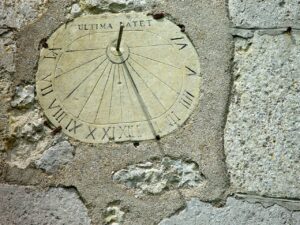
Saturday, June 21:
At 10 a.m. on the road to Abonville, three men walked toward the study of Master Sirou the Notary public. Father George Mineau – accompanied by Fr Blot and Jean Gatineau – was going to submit the will of the “humble and discreet person, Father Louis Chauvet, parish priest of Levesville” into the hands of the notary.
A page was turning and at the same time, it was the beginning of a beautiful book that the Sisters of St. Paul of Chartres, would be writing for 300 years with words of solidarity, charity, humility, peace and praise in various languages.
In Paradisum
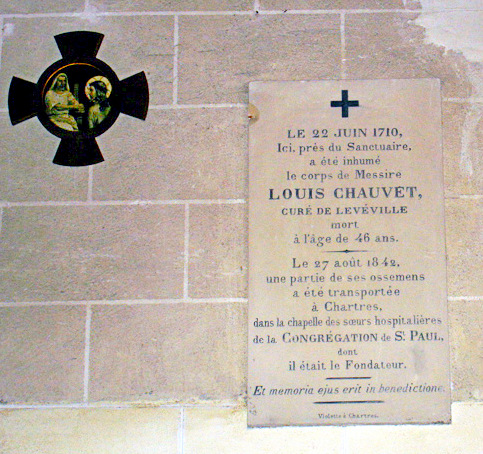
Sunday, June 22:
On Sunday, June 22, the mourners took the path going to the parish. This Sunday was not an ordinary one. Men, women and children came for a final farewell to their pastor, the man from Provence who had won their hearts. Spiritually fortified by his teaching and firm in faith, they listened to the Latin Requiem Mass with the great sequence of “Dies Irae”.
Father Claude Marechaux was appointed by the Bishop to preside at the celebration.
Father Blot and Father Georges Mineau concelebrated with him.
After the Mass, in accordance with the will of the deceased, his body was buried, with “no great solemnity … before the high altar, in the place of the ordinary priests.” This was not far from the altar of the Virgin where lie the first Daughters of the school: Marie Micheau, Marie Anne de Tilly and Catherine Sirou. Surrounded by a large assembly, the choir sang “In Paradisum.”
SOURCE: “Father Louis Chauvet, Founder of the Sisters of St. Paul of Chartres *300th Death Anniversary* 1710-2010.”
